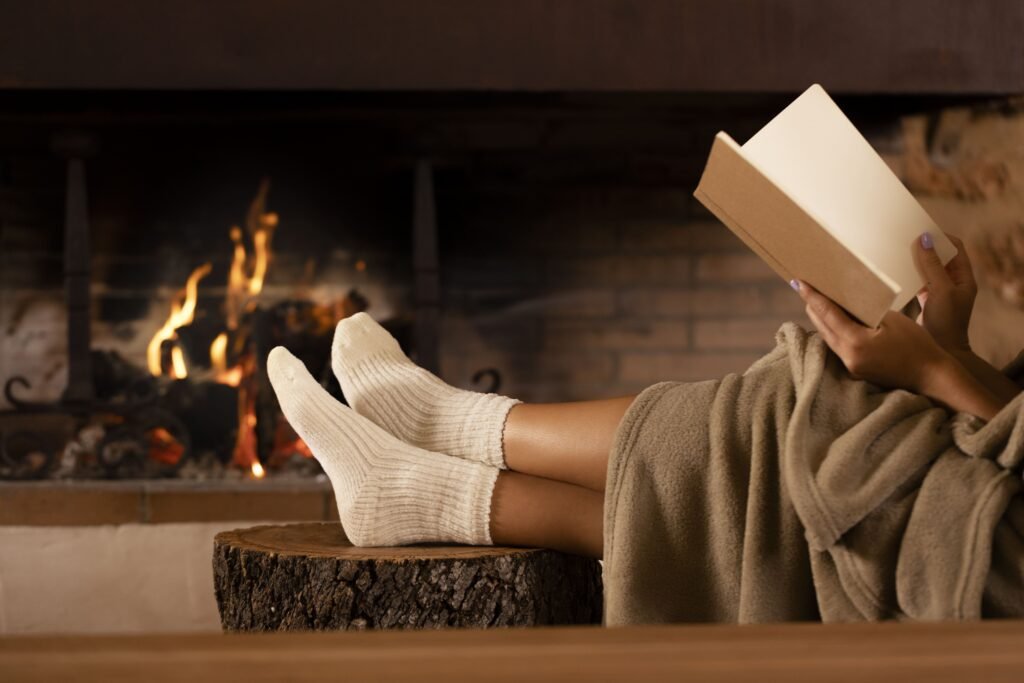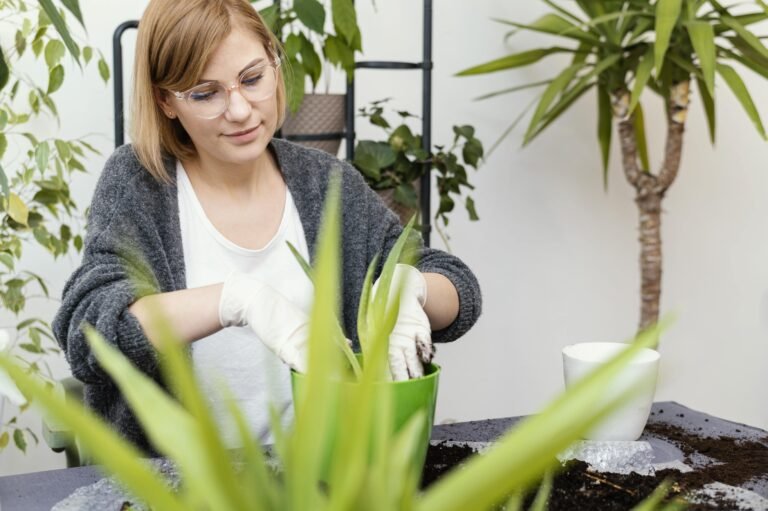Winter Home Insulation Tips- Techniques to Keep the Cold Out
As winter arrives and it gets colder, making sure your home stays warm and cozy is important. Good insulation helps keep your living space comfortable, cuts down on your heating costs, and makes your home more energy-efficient. By making some smart updates, you can strengthen your home against the cold and make it a cozy place to spend the winter months.
Getting your home ready for winter doesn’t have to be overwhelming. You can do a few simple things like sealing up drafts and adding more insulation in important areas to boost the warmth of your home. Whether you’re experienced in DIY projects or just starting and want to make some useful upgrades, these tips will help you keep your home warm. Ready to begin? Let’s explore some key strategies to protect your home from the cold winter weather.
What Are Home Insulation?
Home insulation uses materials and methods to keep your living area comfortable by reducing the movement of heat between the inside of your home and the outside. Think of it like a thermal barrier; it keeps warm air inside during the winter, so the cold outside air doesn’t make your home chilly. In the summer, it does the opposite by keeping the hot air outside, which helps keep your indoors cooler.
The quality of insulation is rated by its R-value, which tells you how well the material can stop heat from passing through it. The higher the R-value, the better the insulation works. You can put insulation in different parts of your house, like the walls, floors, roofs, and around windows and doors. Choosing the right insulation materials and methods can greatly lower your heating and cooling costs, making your home more energy-efficient and comfortable all year round.
Now that you know what home insulation is and how important it is for your home’s energy efficiency, you’re ready to make smart choices to improve your living space for the winter.
Assessing Your Home’s Insulation Needs
Before you improve your home’s insulation, it’s important to check its current condition to see where you need to make changes. This check will help you find the main spots where heat is escaping, so you can focus on those areas first to get the most benefit in terms of efficiency and comfort.
Begin with the attic, as it’s a common place for heat to leak out. Look to see if the insulation is spread out evenly and covers the entire attic floor, including the gaps between the joists. The insulation should be thick and not squished. If it’s thin, worn out, or uneven, it’s a sign that you need to replace or add more insulation.
Next, check the walls by using an infrared thermometer or by having a professional energy audit done. These methods can show you where the cold spots are and where the insulation might be lacking. Also, don’t forget to check the windows and doors; drafts and gaps there can lead to a lot of heat loss. To find drafts, try holding a candle or an incense stick near the frames of windows and doors on a windy day if the smoke moves or blows into the room, you have gaps that need to be sealed.
Don’t overlook the basement and crawl spaces either, as these areas are often ignored but are key to keeping your home warm. Adding insulation here can help prevent cold floors and stop pipes from freezing in the winter.
By carefully examining each part of your home, you can identify exactly where you need to improve insulation and make effective plans for upgrades. This way, your efforts to insulate your home will be well-targeted and successful.
Key Areas to Insulate in Your Home
To keep your home warm and energy-efficient during the winter, it’s important to focus on key areas where insulation can make a big difference. These strategic spots are usually where heat escapes or cold air enters your home.
- Attic and Roof: Since heat rises, the attic is a crucial area to insulate. By adding insulation to your attic floor, you prevent warm air from escaping through the roof. If your attic is finished, insulating the roof can greatly reduce heat loss.
- Walls: External walls are important for keeping out the cold. Insulating these walls can significantly improve how well your home holds heat. If you are remodeling, think about adding insulation to interior walls next to unheated areas like garages or basements to protect your home further.
- Floors and Basements: Insulating floors and basements can stop your feet from getting cold in winter and also keep your whole house warmer. This is especially important for homes above unheated spaces like crawl spaces. Use insulation boards or spray foam to cover these cold areas.
- Windows and Doors: While they aren’t insulated like walls or attics, making sure your windows and doors are well-sealed is very important. Using double-glazed windows, adding weather stripping, and putting in draft stoppers can all help reduce heat loss.
- Ducts and Pipes: Wrapping ducts and pipes, especially those in unheated areas, can prevent heat from escaping and keep them from freezing in the cold months. This step is often missed but it can improve your heating efficiency and protect your plumbing.
By paying attention to these key areas, you not only make your home more comfortable in the winter, but you also save a lot of energy. Proper insulation in these important spots means that the heat in your home is used efficiently, keeping your space warm without wasting energy.
DIY Insulation Tips for the Winter

Taking on insulation projects by yourself can be a great way to keep your home warmer and more energy-efficient. Here are some easy DIY tips to help you insulate your home effectively this winter:
- Seal Windows and Doors: Fill gaps and cracks around windows and doors with caulking or weatherstripping. This is a simple and affordable way to stop heat from escaping. For extra insulation, you can also cover windows with plastic film to create another layer of protection against the cold.
- Install Door Draft Stoppers: Place draft stoppers or draft snakes at the bottom of doors to keep cold air out and warm air in. You can make your draft stopper using old fabric and stuffing it with materials like sand or rice.
- Add Insulation to the Attic: If your attic doesn’t have enough insulation, putting in more can help reduce heat loss. Fiberglass batts are easy to lay down between the joists on your attic floor. Make sure the insulation covers evenly and reaches every corner.
- Insulate Water Pipes: Wrap exposed water pipes with foam pipe insulation, especially in cold areas like basements or garages. This helps prevent the pipes from freezing and keeps your hot water warmer as it flows through the pipes.
- Reflective Foil for Radiators: If your radiators are on outside walls, putting reflective foil behind them can stop heat from escaping through the wall. The foil reflects the heat into the room, making your home warmer.
- Insulate Your Basement or Crawl Space: Use rigid foam boards or spray foam to insulate the walls of your basement and crawl spaces. This can help keep your floors from getting cold and make the temperature in your whole house more stable.
These DIY projects are easy enough for most homeowners and can improve the comfort and heating efficiency of your home. By following these tips, you’ll keep the cold out and make your home much cozier during the winter months.
Professional Insulation Solutions
While you can handle many insulation tasks on your own, some jobs are best left to professionals to ensure the best warmth and security for your home. Here are a few situations where hiring a professional might be the smartest choice:
- Blown-In Insulation: For attics, open wall cavities, and other hard-to-reach spots, blown-in insulation is often the best option. Professionals use special equipment to evenly spread loose-fill cellulose or fiberglass, creating a thorough barrier against the cold.
- Spray Foam Insulation: This type of insulation is great for plugging leaks and filling irregular spaces. Spray foam expands to close up gaps, creating a tight seal that greatly improves your home’s heat retention. Due to the chemicals used and the need for precise application, it’s safer to let professionals handle spray foam insulation.
- Insulating Existing Walls: It can be tricky to add insulation to existing walls without tearing out the drywall. Professionals can pump foam insulation into the walls through small holes, boosting your home’s insulation without much mess or disruption.
- Comprehensive Energy Audit: A professional energy audit is much more thorough than simple checks. Using advanced tools like thermal imaging cameras, experts can pinpoint exactly where your home is losing heat. This detailed analysis helps in planning the most effective upgrades to your insulation system.
- Upgrading Windows and External Doors: Sometimes, the best fix for old, drafty windows and doors is to replace them with new, high-performance models that are designed to insulate better. Professional installers ensure these new windows and doors fit perfectly, which helps stop drafts and reduces heat loss.
While hiring professionals for insulation services might seem expensive at first, the improved comfort and lower energy bills make it a valuable investment. Professionals bring the necessary tools, materials, and expertise to greatly enhance your home’s energy efficiency for the long haul.
Maintaining Your Insulation
To make sure your home stays warm and energy-efficient all year round, it’s important to regularly maintain your insulation. Here are some simple tips to keep your insulation working well:
- Regular Inspections: Get into the habit of checking your insulation at least once a year, especially in the attic and basement. Look for any signs of dampness, mold, or pests, as these can weaken your insulation. If you find any damaged or squished sections, fix or replace them as needed.
- Seal Leaks Promptly: Even the best insulation can fail with air leaks. Use caulk or expanding foam to close gaps around window frames, doors, and where pipes or wires come into your house. Pay extra attention to areas around electrical outlets and light fixtures, as air leaks can often be overlooked.
- Protect Against Moisture: Moisture can lower the effectiveness of insulation, especially types like fiberglass or cellulose. Make sure your home’s vapor barriers are in good shape, and fix any roof or plumbing leaks right away. In places like the attic, having good ventilation is key to stopping moisture from building up.
- Upgrade When Necessary: Insulation can wear out over time or become outdated due to new technology. If your home has very old insulation, think about upgrading to newer materials that provide better heat resistance and are kinder to the environment.
- Professional Assessments: If you’re not sure about the state of your home’s insulation, it might be a good idea to hire a professional for a detailed assessment. They can give you advice that’s specifically suited to your home and help you decide what upgrades or replacements are most important.
By taking good care of your insulation, you not only make it last longer but also keep it working well, which helps your home stay comfortable and keeps your energy costs down. Regular maintenance and timely updates can greatly improve your home’s warmth.
In conclusion
In conclusion, properly insulating your home is a great way to keep the cold out and make sure your space stays warm and energy-efficient during the winter. From learning the basics of home insulation to trying out DIY tips and thinking about professional options, every step is important for a thorough insulation plan. Regularly taking care of your insulation ensures that it keeps working well, protecting your comfort and helping you save on energy costs in the long run. By actively checking, improving, and maintaining your home’s insulation, you can enjoy a warmer winter and a more sustainable home all year.
FAQs
What is the most cost-effective insulation for winter?
Fiberglass batts are one of the most cost-effective and commonly used insulation materials. They are easy to install and effectively reduce heat loss through walls and attics.
How can I tell if my home is well insulated?
A quick way to assess your home’s insulation is by touching your walls and floors during cold weather; if they feel cold, it might be a sign of insufficient insulation. Additionally, an unusually high heating bill can also indicate poor insulation.
Can I install insulation myself?
Yes, there are several types of insulation suitable for DIY, such as fiberglass batts, foam boards, and reflective insulation. Ensure to follow safety guidelines, like wearing protective gear, and consult DIY tutorials or guides specific to your insulation type.
What should I do if my home feels drafty even after insulating?
Check for air leaks around windows, doors, and areas where different materials meet. Seal these leaks with caulk, weatherstripping, or expanding foam to prevent cold air from entering.
Is there an environmentally friendly insulation option?
Yes, options like cellulose, wool, and cotton batt insulation are made from recycled or renewable materials and are considered environmentally friendly. These materials also provide excellent thermal properties.







